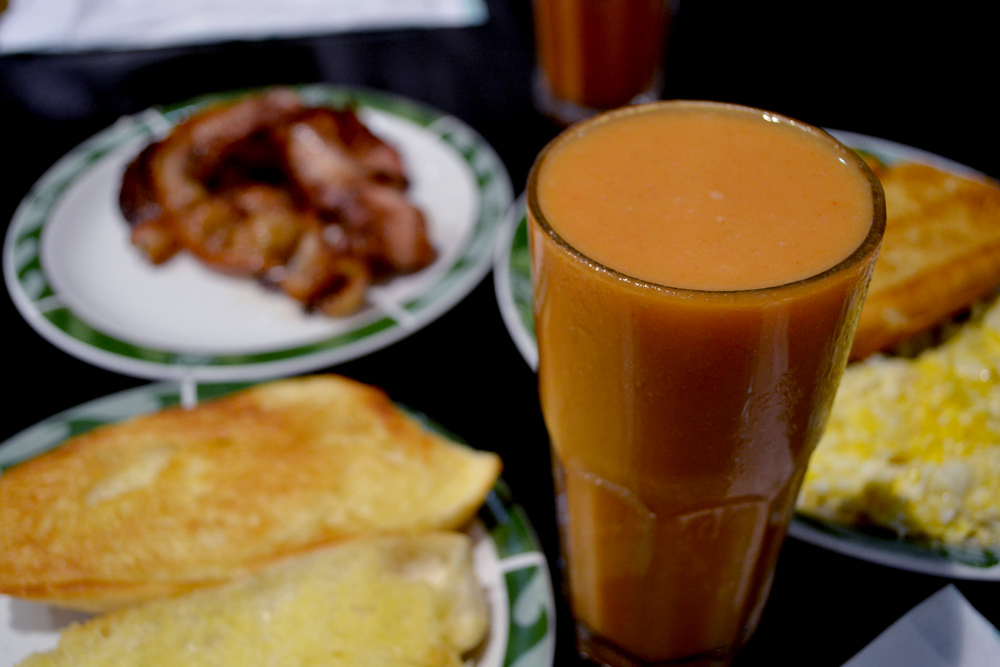The Street: Maracuja (Passion Fruit)

Spending two weeks in Brazil the middle of the Umami Mart build-out was a bit disorienting. But the abundance of tropical fruits on street stalls, in the grocery store and in fancy restaurants forced me forget about home and embrace the fact that I was living amongst wild coconut trees and bossa nova.
As a fruit fiend, I am always on the lookout for fruit. My fruit find in Brazil didn't take much searching. Maracuja (passion fruit) is everywhere. In California, I sometimes see passion fruit-flavored candy or juice, but it's definitely not as in-your-face as it is in Brazil.
Fresh off the plane, Super Faminto columinist Bryan took me to a farmer's market in the São Paulo neighborhood Paraiso. We went straight to a fruit stall where they cut everything for us to try in front of our eyes.

Maracuja at Mercado Municipal in Sao Paolo
I fell in love with the tangy, soda-like flavor of the passion fruit seeds. And both the fruit vendor and Bryan were tutoring my gringo-ass exclaiming, "No chewing, just swallow the seeds!" The slimy, cool texture of the seeds were so rejuvenating after an exhausting 16-hour trip.

After my love-at-first-site moment with maracuja, I set out to try as many passion fruit things as possible.
There's no reason why your day can't begin with some passion fruit juice. This was tart and thick, like a natural sweet tart! A great accompaniment to some bread and butter.

Then you can also end your day with passion fruit cocktails:

Left is a traditional caipirinha; right is a passion fruit caipirinha. At Dalva e Dito in São Paolo.
One of the greatest powers of sounds and flavors is that they can really take you back to a time and place. After my many passion fruit experiences in Brazil, breaking one open will remind me of all the bus rides, volleyball players and sounds during my time there.
While bananas are my work fruit, cherries are my dessert fruit and nashi (pears) are my hot-day fruit -- maracuja is my official vacation fruit.
